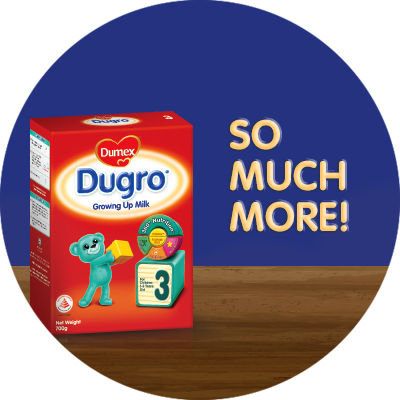Breastfeeding is the best for babies and a healthy diet / maternal nutrition is important when breastfeeding. A decision not to breastfeed can be difficult to reverse. Infant formula is suitable from birth when babies are not breastfed. It is recommended that all formula milks be used on the advice of a doctor, midwife, health visitor, public health nurse, dietitian, pharmacist, or other professional responsible for maternal and child care and the financial implications should be considered. All preparation and feeding instructions should be followed carefully as inappropriate preparation could lead to health hazards.
Dumex Mamil Gold Soy: Cow’s Milk Protein-Free Growing Up Milk
Just when you thought your little one is adjusting well to the milk formula, a case of diarrhoea, vomiting or itchiness hits and you’re left with a cranky toddler. What could have gone wrong? Before you consider a lawsuit for tainted milk formula, it may be a wise decision to consult a health practitioner, such as your family doctor, for them to run allergy tests and check if your child has a cow’s milk protein allergy or is lactose intolerant.
What is cow’s milk protein allergy and is it different from lactose intolerance?
Cow’s milk protein allergy (CMPA), is the second most common food allergy in young children (1). Children who are allergic to cow’s milk are typically also allergic to the proteins in goat’s milk and sheep’s milk, thus eliminating the possibility of substituting cow’s milk with other milk of animal origin (2). Food-related allergies such as cow’s milk allergy tend to surface in younger children, often starting from birth and continuing up till adolescence(3). Lactose intolerance is slightly different from cow’s milk allergy despite sharing several similar symptoms and signs but is often mistaken and used interchangeably.
Cow’s milk allergy is a food allergy wherein your child’s immune system identifies certain cow’s milk proteins as a triggering protein. This subsequently results in your child’s immune system trying to neutralise the triggering protein which includes releasing histamines and other chemicals that cause the visible signs of cow’s milk allergy (2). Lactose intolerance, on the other hand, does not involve the immune system and symptoms only extend to gas, bloating or diarrhoea after consuming milk (2).
Some symptoms of cow’s milk allergy include, but are not limited to:
1. Hives, itching, eczema, watery eyes and tingling of the mouth/lips
2. Shortness of breath, wheezing or coughing
3. Diarrhoea and vomiting
4. Abdominal cramps and colic
| Symptoms of Cow’s Milk Protein Allergy & Lactose Intolerance | Additional Symptoms of Cow’s Milk Protein |
| Diarrhoea | Rashes and hives |
| Nausea; sometimes vomiting | Swelling, often in the lips and face |
| Abdominal cramps | Wheezing |
| Bloating and gas | Tightness in throat and trouble swallowing |
Should your child exhibit one or more of the above symptoms, it’s advised that you immediately consult your doctor for a proper diagnosis.
What can I do if my child is allergic to cow’s milk or is lactose intolerant?
Having a child that has lactose intolerance or cow’s milk allergy may cause plenty of stress during mealtimes for both you and your little one but don’t give up just yet, mamas. Not only is soy-based milk formula a good source of plant-based proteins, it is also a viable alternative to provide vitamins and minerals for strong bones and healthy cell growth (5, 6).
Concerned about how soy-based products will affect your child’s health? Contrary to popular belief, soy-based formulas are safe for children consumption and there are no negative side effects, long-term or otherwise, from drinking soy-based milk formula (7). In fact, soy-based milk and milk formulas have been proven to naturally contain essential nutrients for the optimal growth and development of a growing child (8).
Why choose Dumex Mamil Gold Growing up Soy milk?
Soy-based formulas such as the one used in Dumex Mamil Gold Soy are lactose and cow’s milk free but still just as nutritious as cow’s milk formulas. In addition to providing your child with all the essential amino acids for healthy growth and development, Dumex Mamil Gold Soy is also sucrose-free and contains soy protein isolate with higher levels of DHA (53mg per 100g powder) and soy calcium as compared to other leading brands available in Singapore, which helps your little one’s bones grow healthy and strong.
Dumex Mamil Gold Soy formula is made from soy protein isolate and includes prebiotics for healthier tummies. Worried about the lack of calcium and other minerals that cow’s milk usually provides? Don’t be! Dumex Mamil Gold Soy is specially formulated for children aged 1 year and above to ensure that your little one’s dairy-free dietary and nutritional needs are fully cared for with soy-based calcium, DHA, ARA, omega-3 and 6 to make up for nutrients that they may lack. DHA, ARA and omega-3 and 6 are essential components in your child’s diet to maintain good eyesight and healthy brain development. Dumex Mamil Gold Soy also contains vitamin D, vitamin E and zinc. Vitamin D is an important vitamin that helps promote better absorption of calcium for stronger bones and teeth while vitamin E has antioxidant properties that help protect your little one’s cells.
Dumex Mamil Gold focuses on delivering the nutritional benefits your child needs in one nourishing formula. Unsure if your kiddo will take to it? Visit Dumex.com.sg for samples now and explore the boundless benefits that your child can get from Dumex Mamil Gold Soy.
References
1. Lee A. et al. Asia Pacific Allergy 2003, 3(1), p.3.
2. Edwards, C.W. and Younus, M.A. (2019). Cow Milk Allergy. Retrieved from https://www.ncbi.nlm.nih.gov/books/NBK542243/
3. Roehr CC, et al. Clin Exp Allergy 2004;34(10):1534-41
4. Heine, R.G., AlRefaee, F., Bachina, P., De Leon, J.C., Geng, L., Gong, S., Madrazo, J.A., Ngamphaiboon, J., Ong, C. and Rogacion, J.M. (2017). Lactose intolerance and gastrointestinal cow’s milk allergy in infants and children – common misconceptions revisited. Retrieved from https://www.ncbi.nlm.nih.gov/pmc/articles/PMC5726035/
5. Cows Milk Allergy. (n.d.) NHS Foundation Trust. Retrieved March 25, 2020 from https://www.thh.nhs.uk/documents/_Patients/PatientLeaflets/paediatrics/allergies/PI008-Cows_milk_allergy_A4-May_13.pdf
6. Badger, T.M., Gilchrist, J.M., Pivik, R.T., Andres, A., Shankar, K., Chen, J.R., and Ronis, M.J. (2009). The health implications of soy infant formula. Retrieved from https://academic.oup.com/ajcn/article/89/5/1668S/4596959
7. Vandenplas, Y., Castrellon, P.g., Rivas, R., Gutierrez, C.J., Garcia, L.D., Jimenez, J.E., Anzo, A., Hegar, B., and Alarcon, P. (2014). Safety of soya-based infant formulas in children. Retrieved from https://www.cambridge.org/core/services/aop-cambridge-core/content/view/22D7DE80B0592710041B333BCE5BF1F5/S0007114513003942a.pdf/safety_of_soyabased_infant_formulas_in_children.pdf
8. Kant, R., and Broadway, A.A. (2015). The Benefits of Consuming Soya milk- A Review. Retrieved from https://www.researchgate.net/publication/307436295_The_Benefits_of_Consuming_Soya_milk-_A_Review


Ask Our Careline
Whatever’s on your mind, we’re here to help




